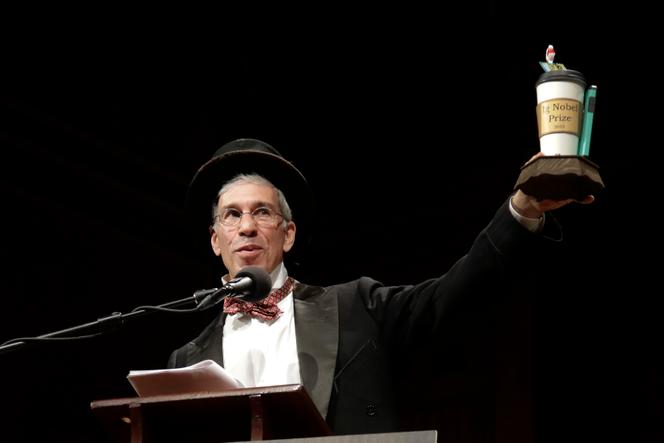


As a burlesque preamble to the serious Nobel Prize season scheduled for early October, the Ig Nobel ceremony (a pun on the adjective "ignoble") celebrating all aspects of improbable science was held on Thursday, September 12, in Cambridge, Massachusetts. While the pandemic forced the last four editions to be held by videoconference, the event was finally back in a real hall, with a real audience, who revived the tradition of sending a shower of paper airplanes onto the stage.
When it comes to celebrating improbable science that answers the wackiest questions, no one takes themselves too seriously. So it was in relaxed mode that real Nobel laureates, such as Esther Duflo (2019 Nobel Prize in Economic Sciences), came to the Massachusetts Institute of Technology to present the prizes in 10 categories that fluctuate from year to year at the whim of the master of ceremonies, American Marc Abrahams.
At the Ig Nobel awards, humor and understatement rule the roost. This is illustrated by the Ig Nobel Peace Prize awarded to the American project which, during the Second World War, studied the possibility of placing pigeons in missiles to ensure their guidance system. Still in the category of animal experiments that wouldn't pass muster today, the biology category also includes a 1941 study into the mechanism by which cows eject their milk, particularly when frightened: to achieve this, paper bags were loudly burst beside the head of a cat... placed on the cow's back.
Another animal example in physics, with an article revealing that a dead trout swims very well in a swirling environment. And, in the field of physiology, a Japanese team won recognition after demonstrating that, like the fish called "loche," mammals (mice and pigs) could oxygenate themselves rectally. Next step: humans. Any volunteers?
The Ig Nobel prizes are usually reserved for work on the body. In the anatomy category, a study by French scientists was rewarded for asking whether the spirals formed by hair implantation turn in a different direction depending on whether you live in the northern or southern hemisphere. In medicine, the Ig Nobel went to a study that proved that a placebo that hurts is more effective than a painless one.
More time would be needed to detail the sometimes laughing protocols of these experiments. In the probability category, however, it has been demonstrated that, after playing heads or tails 350,757 times, there is a slight bias: 51% (not 50%) of the time, the coin lands on the side on which it was tossed. Proof that you can give chance a helping hand in this game.
You have 14.36% of this article left to read. The rest is for subscribers only.
